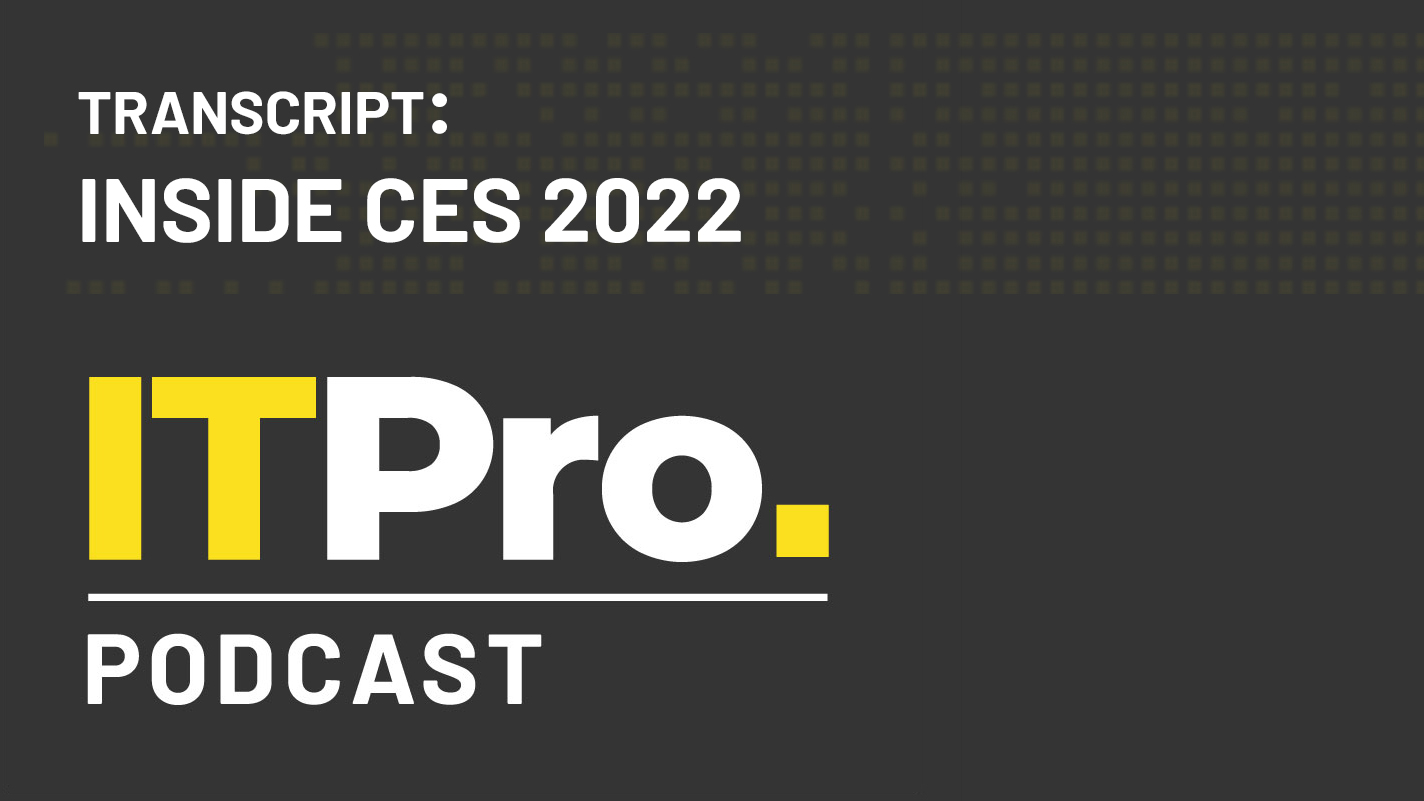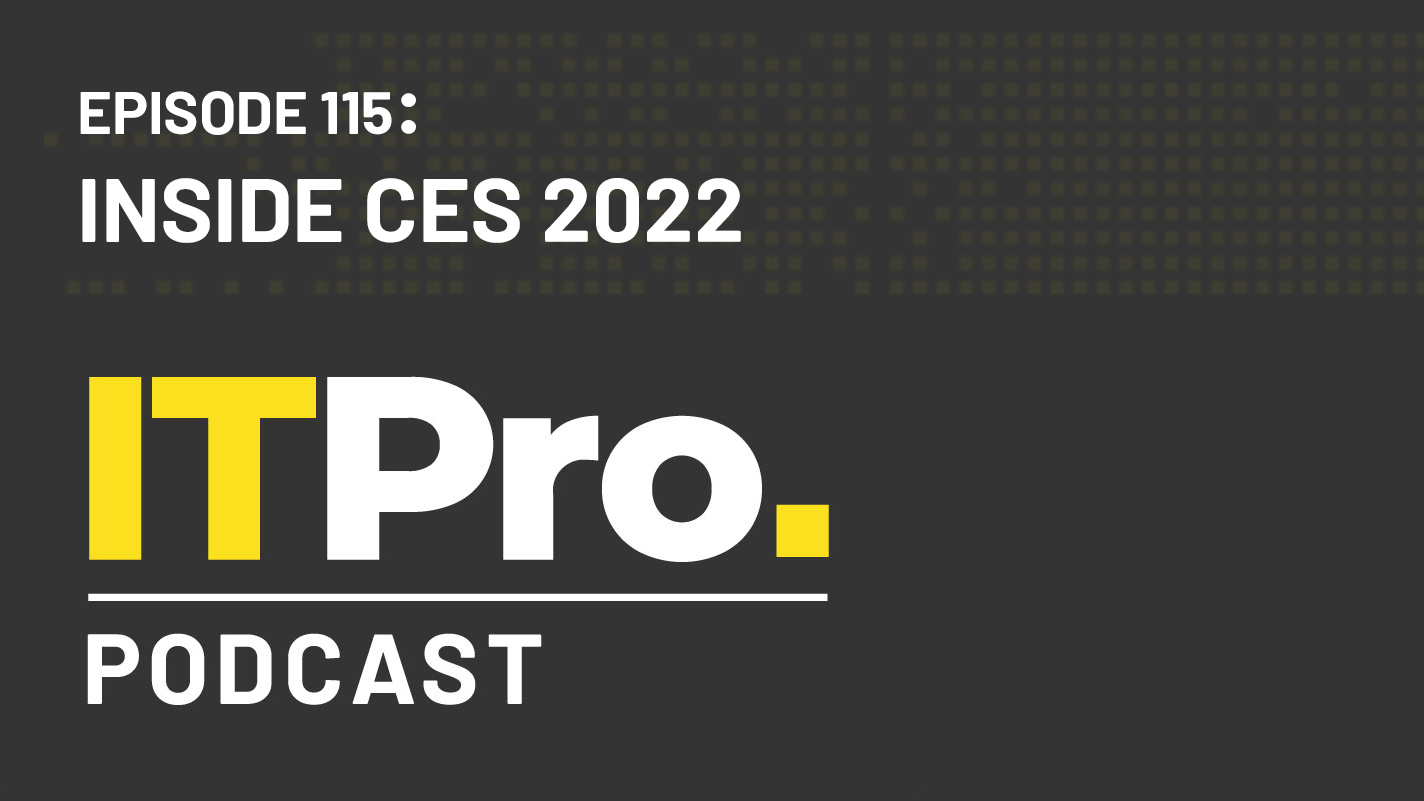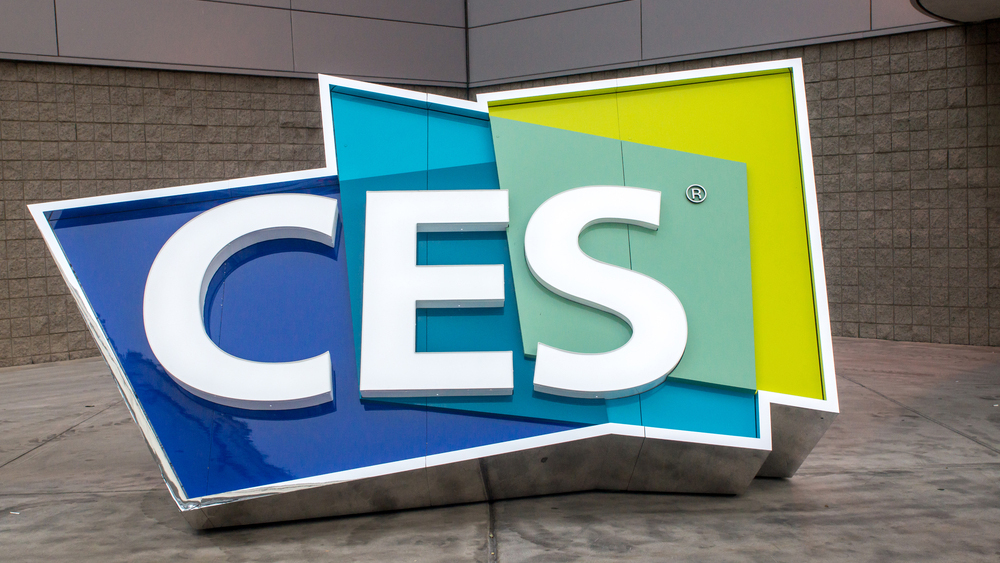The most interesting tech of CES 2021
While this year’s expo was much smaller than usual, there was still some interesting tech – and major announcements – on offer


This article originally appeared in Issue 13 of IT Pro 20/20, available here. To receive each new issue in your inbox, click here.
This year’s CES was different to most; there were no sticky carpets, no terrible coffee and no overindulgent post-keynote parties. That’s because, for the first time in its 54 year history, the world’s largest consumer technology show was an entirely virtual event, meaning that rather than hundreds of thousands of people flocking to Las Vegas, potentially millions could experience it from their own homes.
While notably smaller than usual, there were still plenty of significant announcements, with the majority of big names in tech taking the opportunity to launch new products and showcase what we can expect from tech in 2021. Some things were inevitably different, though, due to the changing times we’re living through.
Pandemic tech
Not only did the global COVID-19 pandemic necessitate a digital-only CES this year, but it also influenced a huge number of the product launches at the virtual show.
With employees around the globe continuing to work remotely – a trend that’s likely to continue beyond the pandemic – PC makers took to CES to showcase devices that focus on flexible working.
HP, for example, launched new business laptops “designed to power hybrid work environments and growing personal creative studios”. Not only are they slimmer and more powerful than ever before, but these new devices – which include the HP 840 G8 Aero, Elite Dragonfly G2HP, and Elite Folio – also boast upgraded camera setups for improved video calling, AI-based audio for simplified collaboration, and built-in 5G connectivity for faster download speeds.
Dell also focused on flexible working, but took the idea step further with a range of monitors that feature a dedicated Microsoft Teams button. This lets users quickly launch the app to make and receive video calls, while the onboard 5MP infrared camera, noise-cancelling microphone and dual 5-watt integrated speakers promise to deliver high-quality video calls.
Sign up today and you will receive a free copy of our Future Focus 2025 report - the leading guidance on AI, cybersecurity and other IT challenges as per 700+ senior executives
“People’s expectations of their technology continue to evolve. It’s why we push beyond barriers to create devices that offer better experiences and are more integrated into our lives,” said Ed Ward, senior vice president of Dell’s Client Product Group.
“Our new intelligent PCs make it possible for us to work smarter and collaborate easier, so we can give our best selves in all that we do. Secure, sustainable and smart: that’s the way forward for PCs.”
Other brands took the “pandemic tech” category a bit more literally. Gaming company Razer, for example, showed off a high-tech face mask named Project Hazel, which features "N95 medical-grade respirator protection,” active ventilation, a clear shield so you can see people speaking, and a case that recharges the ventilators and sanitises the mask as it's charging.
Roll up, roll up
At CES two years ago, Royale launched the world’s first foldable phone, and at CES 2021, we saw the arrival of the first rollable handsets. As the term “rollable” suggests, the devices get more screen by unrolling it into a larger display.
First up was the LG Rollable, which features a single display that looks the size of a standard smartphone at first glance, but this screen rolls out to give you a tablet-like experience. It’s not just a concept, either; according to reports, despite only being glimpsed for a few seconds in the presentation, LG plans to release the phone "later this year".
Lesser-known phone maker TCL also showed off its first rollable device at CES. As it’s still a concept, not much is known about the device, but Tiago Abreu, head of the "X-Lab" at the TCL Industrial Design Center, says that the as-yet-unnamed handset can go from a 6.7-inch phone to a 7.8-inch tablet with "a simple tap of the finger."
“The portable 6.7-inch AMOLED Rollable Display re-defines the standard form of a smartphone,” the company said in a statement “With a rollable AMOLED display, it can be extended from 6.7-inches to 7.8-inches with a simple tap of the finger, turning it from a smartphone into a tablet and creating an entirely new user experience with its easily adaptable user interface. The smartphone is less than 10mm thick, making it significantly thinner than the foldable smartphone.”
I like big bots
Of course, it wouldn’t be CES without there being robots. However, while the show is often a showcase for novelty and conceptual robots, this year we saw more advanced androids that could help us adapt to the new normal.
Samsung took the opportunity to show off two new robots called Bot Handy and Bot Care. The former is capable of recognising and grabbing all types of objects throughout the house, which means you can assign it to load the dishwasher, put away groceries, or tidy up your washing. Best of all, it can pour you a glass of wine.
The latter, Bot Care, has a flip-up display attached to its ‘head’ so you can stream video calls. That’s not all it can do, though, as the friendly-looking bot can also measure users’ blood pressure, heart rate, respiration and sleeping state, and will remind them when it’s time to take their medicine.
Health, likely as a result of the global pandemic, was a familiar theme at CES this year – particularly when it comes to robots. UK-based Shadow Robots took to the show to announce that it's secured funding from Innovate UK to explore whether its Tactile Telerobot – a robot that takes the form of a dexterous hand – can be used in manufacturing COVID vaccines for Pfizer.
Perhaps the pandemic had more influence on this year’s CES than we first thought; not only was this the first-ever virtual CES, but it was also a stage for manufacturers to showcase technology designed for the new normal.
Carly Page is a freelance technology journalist, editor and copywriter specialising in cyber security, B2B, and consumer technology. She has more than a decade of experience in the industry and has written for a range of publications including Forbes, IT Pro, the Metro, TechRadar, TechCrunch, TES, and WIRED, as well as offering copywriting and consultancy services.
Prior to entering the weird and wonderful world of freelance journalism, Carly served as editor of tech tabloid The INQUIRER from 2012 and 2019. She is also a graduate of the University of Lincoln, where she earned a degree in journalism.
You can check out Carly's ramblings (and her dog) on Twitter, or email her at hello@carlypagewrites.co.uk.
-
 What businesses need to know about data sovereignty
What businesses need to know about data sovereigntyWithout a firm strategy for data sovereignty, businesses put their data and reputations at risk
-
 Anthropic says MCP will stay 'open, neutral, and community-driven' after donating project to Linux Foundation
Anthropic says MCP will stay 'open, neutral, and community-driven' after donating project to Linux FoundationNews The AIFF aims to standardize agentic AI development and create an open ecosystem for developers
-
 Podcast transcript: Inside CES 2022
Podcast transcript: Inside CES 2022IT Pro Podcast Read the full transcript for this episode of the IT Pro Podcast
-
 The IT Pro Podcast: Inside CES 2022
The IT Pro Podcast: Inside CES 2022IT Pro Podcast We bring you a look at some of the most interesting tech from this year’s show
-
 What is a Neon artificial human?
What is a Neon artificial human?In-depth Samsung’s Star Labs has unveiled a few details about its Neon artificial humans, but this isn’t Blade Runner
-
 CES 2019: All the biggest announcements
CES 2019: All the biggest announcementsNews The most important news from the year's largest tech event
-
 Intel has hit a “major breakthrough” in quantum computing
Intel has hit a “major breakthrough” in quantum computingNews The CES 2018 keynote covered quantum computers, self-driving cars and a self-learning AI chip
